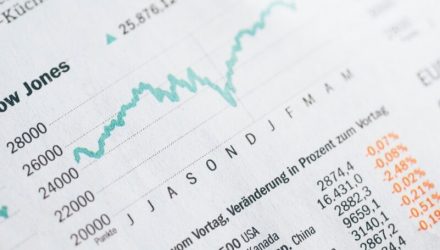By Bob Haegele
Robo-advisors have made investing access to just about everyone. Not only are fees very low; they also often have no minimums and fractional shares. Nevertheless, fees still matter, and people want to know how robo-advisor fees compare.
Thus, robo-advisor fees are exactly what we will explore in this post. We will see how fees for different robo-advisors impact your investments.
How much of a difference does 0.15% make? How much will this save me compared to a human financial advisor? We will answer all of these questions in this post.
What is a Robo-Advisor?
Generally, a robo-advisor is an service that manages investment portfolios with a set of algorithms and technologies that require little to no human interaction. The definition has broadened somewhat in recent years as many investment advisors have added robo-advisors to their arsenal.
Because robo-advisors don’t require active management, they reduce costs for both the investor and the investment firm. But beyond that, the reduction in human labor has enabled all kinds of investment styles, such as investing in certain niches as well as value-based investing.
Plus, when you combine robo-advisors with online platforms, investors can setup entirely passive portfolios. That means you can put your portfolio on autopilot, which is great for those of us with busy lives.
Summary of Robo-Advisor Fees
Below, you’ll see a list of fees from many of the most popular robo-advisors in addition to expense ratios. This will give you a full sense of how much each robo-advisor costs.
|
Robo-Advisor |
Fees |
Avg. Expense Ratio |
Min. Investment |
Benefits |
|---|---|---|---|---|
 |
0.25% or 0.40% |
0.11% |
$0 |
Tax-loss harvesting, dynamic rbalancing |
|
|
$0 or $125/yr. |
Varies; low-cost funds available |
$100 |
Pie-based investing |
 |
$45, $120, or $250/yr. |
N/A |
$0 |
No minimums and advisor access |
 |
0.00% |
0.05% |
$1 |
No management fees |
|
|
$1, $3, or $5/mo. |
0.10% |
$5 |
Invest your change |
 |
0.15% (estimated) |
0.05% (estimated) |
$3,000 |
Low management fees |
|
|
0.25% |
0.08% |
$500 |
Low management fees |
|
|
$1, $5, or $9/mo. |
Core: 0.075% |
$0 |
Financial coaching, impact investing |
|
|
0.00% |
0.11% |
$5,000 |
No management fees |
 |
0.00% first $10,000, then 0.25% |
0.15% |
$2,000 |
Strong portfolio performance |
 |
0.24% |
0.12% |
$500 |
Selective portfolios: remove ETFs you don’t want |
The table here makes it clear that SoFi Automated Investing is the winner from a fee standpoint. That being said, fees aren’t everything; performance is important, too.
That’s something we cover in our best robo-advisors post.
What is the Average Robo-Advisor Management Fee?
Average management fee: 0.28%
As you can see from the first table here, robo-advisor fees can vary quite a bit. But to throw a cog in the wheel, they don’t all charge fees the same way. Some charge a flat monthly or annual fee; others charge a percentage of AUM.
Plus, those that charge flat annual fees have three different pricing tiers, making it virtually impossible to give you one answer for all situations.
Nevertheless, for the purpose of this question, let’s assume you have a $10,000 portfolio and, in the event of one of the monthly or annual fee structures, you always choose the middle tier.
In such a case, the fees for the flat-fee robo-advisors as a percentage of AUM are:
I’ve mentioned before that these robo-advisors with flat fees are always cheaper for larger portfolios. For example, if you have $100,000 invested instead of $10,000, you can simply move the decimal point one place to the left for each of the fees above. Blooom is still slightly expense at that level, but the others become quite cheap.
To arrive at the 0.28% number at the top of this section, I used the percentages for the flat-fee advisors just above, then averaged them with the other expense ratios in the table.
What is the Average Robo-Advisor Expense Ratio?
Average expense ratio: 0.09%
Expense ratios are much easier to calculate in most cases, although there is still some variation. For the purposes of this section, I took the average of all of Ellevest’s funds to reach an average of their expense ratios.
Note that M1 Finance and Blooom were excluded from this calculation. M1 Finance does offer a variety of ETFs, but users build own portfolios, so it’s impossible to give an exact estimate. However, M1 offers plenty of low-cost funds, including those from Vanguard and other brokers.
Blooom was excluded because it doesn’t offer its own funds. Instead, it is a service that manages your retirement account(s).
Impact of Robo-Advisor Fees
Total average robo-advisor fee (management fees + expense ratios): 0.37%
It’s one thing to see how much a robo-advisor charges in fees, but it’s a whole other to see the impact of them. Of course, things are straightforward for those that charge a flat monthly or annual fee.
But when the fee is a percentage of your portfolio, it’s less obvious how much you’ll actually pay.
That being said, many robo-advisors will give you a simple example that helps you make sense of their fees. For example, it might tell you that it has a 0.25% fee, meaning you pay $250 per year on a $10,000 balance.
That’s easy enough to understand. But what happens if you pay the same fee for 30 years, for instance? After all, you probably aren’t investing for just one year. And as your portfolio grows, so, too, do your fees if you pay a percentage of assets.
Luckily, the fees are still pretty low in the case of most robo-advisors. Still, it helps to see some real numbers. That’s why we’re going to lay out a few scenarios here to help show how the real-world impact of robo-advisor fees may look.
For this scenario, let’s imagine you start with $0 and invest $5,000 per year. Your average annual investment return is 7% over 30 years. That means you’ll invest $150,000 of your own cash, in total.
The following table will show how your returns after 30 years vary depending on fees.
|
0% Fee |
0.15% Fee |
0.25% Fee |
0.50% Fee |
1% Fee |
|
|---|---|---|---|---|---|
|
Total Returns |
$505,365.21 |
$491,239.89 |
$482,065.15 |
$459,946.15 |
$419,008.39 |
|
Total Fees |
– |
$14,125.32 |
$23,300.06 |
$45,419.06 |
$86,356.82 |
As you can see, fees aren’t terrible for your 0.15% and 0.25% fees. The latter is the highest most robo-advisors charge these days.
But the fees start to get out of hand starting at the 0.50% fee, and that is about the lowest most human advisors charge. That is assuming they charge a fee as a percentage of assets under management (AUM). However, many human advisors will charge an hourly rate or a flat annual rate instead.
Do Robo-Advisor Fees Really Matter?
Robo-advisor fees are never something we should completely ignore, but the fees are generally quite low for all robo-advisors. The average management fee is 0.28%, and the average expense ratio is 0.09%.
Over the course of 30 years and using our scenario above, that would add up to just over $34,000. While that is significant, it is still small compared to the $86,000 you’d pay to a human advisor charging 1%.
Thus, it’s important to consider the whole picture. For example, how well does the robo-advisor perform? Does it have all the features you want? Or, perhaps does it allow you to invest according to your values?
These are all things we have to consider. And, undoubtedly, it is partly because of the changes robo-advisors have spurred that have allowed us to be so picky with our investments.
In other words, we have more choice than ever. And for investing, that’s a good thing.
Originally published by Modest Money, 2/23/21
